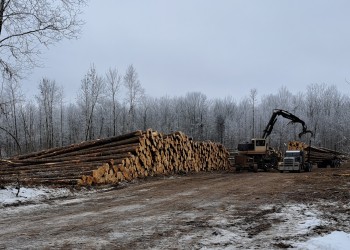Welcome to Chippewa National Forest
Fall for the Chippewa!
The Chippewa National Forest puts on a dramatic show of fall color when the weather begins to cool. The fall season is a favorite for visitors who want to take in the gold tamaracks, red maples, campfires, and cool breezes of the season. The Chippewa National Forest offers miles of scenic byways to travel, as well as colorful trails. After a busy summer, many visitors seek out a quiet drive through the colorful autumn forest.
Recreation Opportunities
Tribal Relations

Camping

Outdoor Science

Timber Sales

Maps and Guides

Memorial Tree Area










